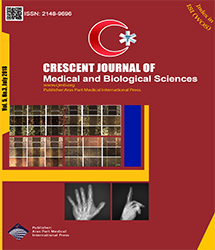Jul 2018, Vol 5, Issue 3
Advanced Search
For Author's & Reviewer's
Poll
How do you find the scientific quality of the published articles on our web site?
| Letters to Editor | |
| Role of School-Based Absenteeism Data in Surveillance and Prediction of Flu Season | |
| Hammad Akram1 | |
| 1Graduate, College of Medicine, Hamdard University, Karachi, Pakistan | |
|
CJMB 2018; 5: 268–269 Viewed : 5341 times Downloaded : 2864 times. Keywords : Epidemiology, Influenza, Surveillance, Schools |
|
| Full Text(PDF) | Related Articles | |
| Abstract | |
One of the important parts of public health surveillance is to track flu (influenza) and similar respiratory conditions. Schoolbased surveillance of flu or influenza-like illness (ILI) is critical as children are more susceptible to infections due to their
developing immune system and the nature of interaction they have in the school. Establishing enhanced flu surveillance
systems could be useful in monitoring the spread and severity of flu, observing disease trends and fnally implementation
of the health promotion strategies. An effective surveillance method starts with the establishment of multiple stakeholder
contacts and effective collaborations. This is followed by the development of data flow mechanisms to obtain absenteeism
information from each participating school. The collected data can be comprised of information such as the total number
of enrolled students and staff, the number of absent students and staff, and the number of absences due to ILI. Additionally,
school response rates can also be monitored periodically in order to assess the effectiveness of a program.
Supplementary Materials |
Submit Paper
Online Submission System CJMB ENDNOTE ® Style
CJMB ENDNOTE ® Style
 Tutorials
Tutorials
 Publication Charge
Medical and Biological Research Center
About Journal
Publication Charge
Medical and Biological Research Center
About Journal
Online Submission System
 CJMB ENDNOTE ® Style
CJMB ENDNOTE ® Style
 Tutorials
Tutorials
 Publication Charge
Medical and Biological Research Center
About Journal
Publication Charge
Medical and Biological Research Center
About Journal
Publication Information
Publisher
Aras Part Medical International Press Editor-in-Chief
Arash Khaki
Deputy Editor
Zafer Akan
Aras Part Medical International Press Editor-in-Chief
Arash Khaki
Deputy Editor
Zafer Akan
Published Article Statistics


















